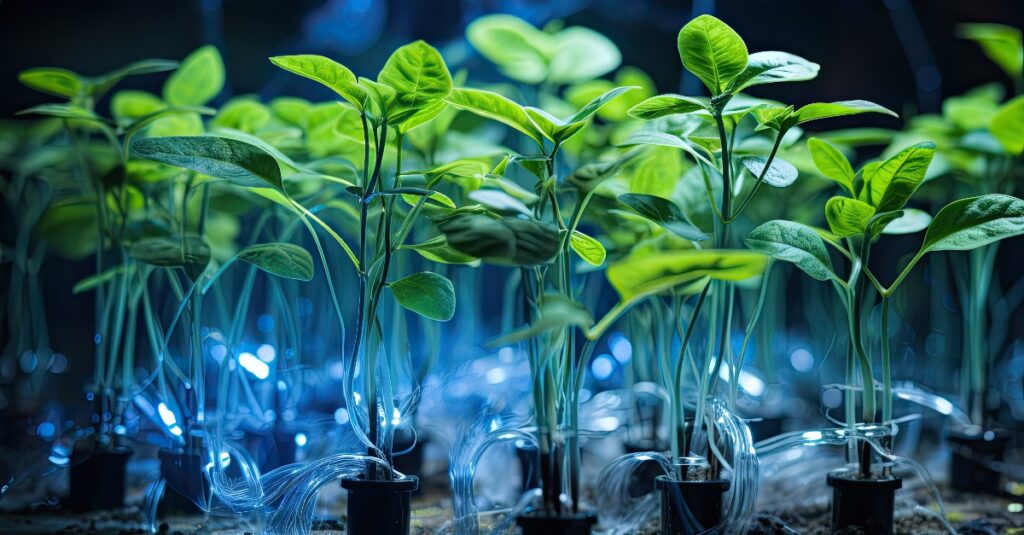Hydroponics System Types

There are a lot of times in life when we nosedive into something and then figure it out as we go—being thrown into the deep end as some may say. I imagine this is what starting a new job, parenting, or picking up a few hobbies can feel like. And I think this is generally my approach to a lot of things and not a bad one in some circumstances, but I really don’t think this is a good method for hydroponics. When learning to grow plants…yes! Throw some seeds in the ground and learn as you go. Each year will get better and easier. Hydroponics is a slightly bigger giant, especially here in Alaska and I think part of its bad reputation comes from this nosedive mentality. Can this method of growing be an awesome tool? Absolutely. Should it be a replacement for soil growing? Personally, I don’t think so. With just a little research and careful consideration when choosing a system based on your individual situation, I think hydroponics can be a great supplemental source of good nutrition for Alaskans.
So officially, hydroponics is the “technique of growing plants using a water-based nutrient solution rather than soil” but the root of the word hydroponics essentially means the labor of water. Water is the basis for all hydroponic systems and helps to provide transportation and access for plants to needed nutrients. There are 6 main types of hydroponic systems: wick, floating/deep water well, drip, ebb and flow, nutrient film technology (NFT), and aeroponics. Each can be effective in different situations, so you will have to decide which works best for what you are trying to accomplish.

The wick system has a water reservoir which is connected to the plants’ roots via the capillary action of a candle or lantern wick. This method is easy and inexpensive, but larger plants that are heavy feeders may not have enough water or even nutrient distribution to be successful. For a deep water well, the plant roots are saturated in water which also makes for an easy and inexpensive growing method but requires a source of root aeration and more maintenance. The drip system uses a pump to send nutrient solution directly to the base of plants using drip emitters. Many fruits and larger veggies are often grown with this method since it is easily manipulated and efficient but must be regularly cleaned and monitored. Ebb and flow uses a series of stacked trays and gravity to provide plants with access to water at regular intervals. This system is low maintenance and energy efficient but only certain plants can handle this form of saturation. The NFT system is very common and pumps a thin, film-like layer of nutrient solution down rows of tubes or channels where plant roots are suspended. This method is very niche to certain growing media and is unforgiving to electricity interruptions but can have high yields when running properly. Lastly, aeroponics has plants suspended in the air with mist nozzles that are positioned to regularly spray the nutrient solution onto the roots. These structures can be complicated to build and may easily clog, but they promote rapid plant growth and can house a wide variety of crops.
This is a quick introduction to just the different types of hydroponics systems you can use to grow plants. There is also choosing a growing media, understanding soluble plant nutrition, making sure your plants have ample air and water, finding the best lighting, how to clean your system, how much and who will maintain it, how to properly plant, and so much more. And yes, there are some things that can easily be learned along the way, but there is also some research and forethought required here. Do you have any strong preferences? Do you really want to try one of the six systems? Do you only want to use biodegradable materials? Do you want to use the least amount of energy? Do you want to use hydroponics as an educational or economic or personal tool? Your answers to these questions are going to impact your startup goals.
That being said, do not be overwhelmed. You can always start with a simple tray filled with some water and some forgiving but crunchily delicious lettuce plants. And if something doesn’t work, make a small change and try again. A hydroponic system is never permanent. This is an exciting new technology with so many opportunities. We want Alaskan agriculture and winter growing to be successful. Stay tuned for some more resources on hydroponics while you start planning your system.
Written by Nikira Lane, agAlaska Ag Tech Specialist


Comments are closed